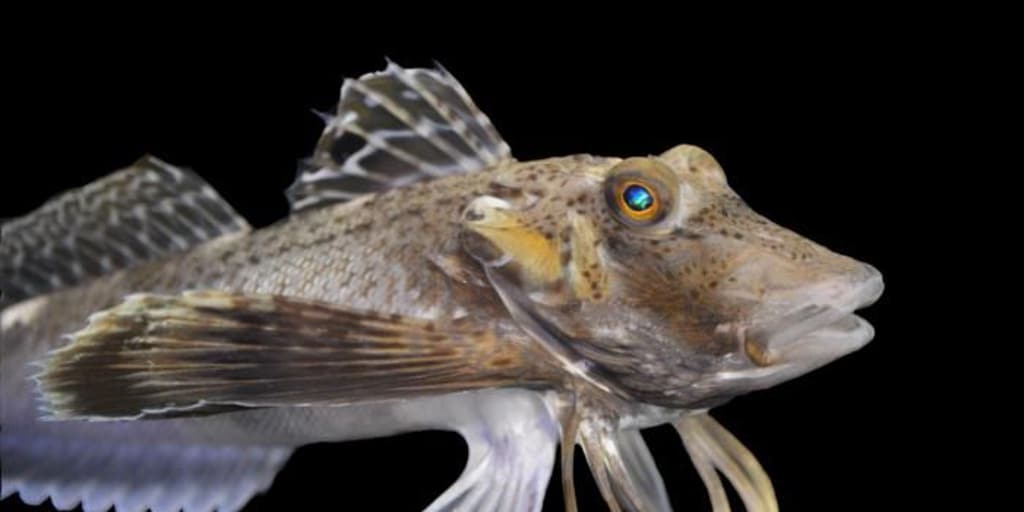Marine robins are strange animals: they have the body of a fish, but also a kind of wings similar to those of birds or butterflies and six legs similar to those that crabs use to walk. With them they can run, dig or find prey, giving them an advantage over other marine animals that have to hover and stalk their loot until it emerges from the ground. Now, two studies published in ‘Current Biology’ (which can be found here y here) reveal something else: some use these appendages as a kind of tongue capable of ‘tasting’ the ground thanks to papillae similar to those we have on our tongue.
It all started by chance in 2019, when one of the authors of the studies, Corey Allard, came across these strange fish with legs at the Cape Cod Marine Biology Laboratory. We saw that they had some marine robins in a tank and they showed them to us. , because they know we like weird animals, says Allard, a postdoctoral researcher in Nicholas Bellono’s lab, where the sensory biology and cellular physiology of many marine animals, including octopuses, jellyfish and sea slugs, are researched. Sea robins are an example of a species with a very unusual and novel trait. We wanted to use them as a model to ask: ‘How do you create a new organ?’
Allard’s subsequent research, along with Bellono and Amy Herbert and David Kingsley of Stanford University, led to these two studies that provide the most complete understanding to date of how marine robins use their legs, what genes control appearance of those limbs and how these animals could be used as a conceptual framework for evolutionary adaptations.
Are they a sensitive organ?
The ‘legs’ of sea robins are actually extensions of their pectoral fins, of which they have three on each side. Allard first tried to determine whether the paws are genuine sensory organs, something scientists had suspected but never confirmed. He conducted experiments observing captive sea robins hunting for prey, in which they alternated between brief episodes of swimming and ‘walking’.
These fish also occasionally scratched the surface of the sand to find buried prey, such as mussels and other shellfish, without visual cues. The researchers realized that the paws were sensitive to both mechanical and chemical stimuli. In fact, they buried capsules with chemical substances and the fish found them easily, as if they used their legs as a kind of tongue.
Some more ‘dumb’ fish
But chance led to another chance discovery. Halfway through the experiment they received a new shipment of fish. However, this group neither excavated nor was able to find buried prey or capsules like the others. At first, researchers thought they were less clever fish or that their conclusions were wrong. They were wrong: in reality, it was a different species.
However, they made the decision to study both types of animals. On the one hand, Prionotus carolinus, which digs to find buried prey and is very sensitive to touch and chemical signals; on the other, Prionotus evolans, which lacks these sensory capabilities and uses its legs to move and explore, but not to dig.
little differences
When examining the differences between the legs of the two fish, they discovered that those of the burrowing variety were shovel-shaped. Additionally, its limbs were covered with protuberances called papillae, similar to our taste buds. In contrast, the legs of non-burrowing fish were rod-shaped and lacked papillae. Based on these differences, the researchers concluded that papillae are evolutionary subspecializations.
Allard’s paper, which describes the evolution of new sensory organs in marine robins, included analysis of marine robin specimens from the Harvard University Museum of Comparative Zoology to examine the morphologies of the legs in different species and at different moments in time. Burrowing species, he found, are restricted to only a few locations, suggesting a relatively recent evolution of this trait.
These fish may hold the key to us being able to walk
But beyond their biological capabilities, these studies can shed light on the question of how animals evolved to adapt to very specific environments. For example, about 6 million years ago, humans acquired the ability to walk upright, separating themselves from their primate ancestors. Bipedalism is a defining characteristic of our species, and we only know a little about how, when and why that change occurred.
For their part, marine robins and their adaptation to life at the bottom of the ocean could offer clues. For example, there are genetic transcription factors that control the development of the legs of marine robins that are also found in the limbs of other animals, including humans.

